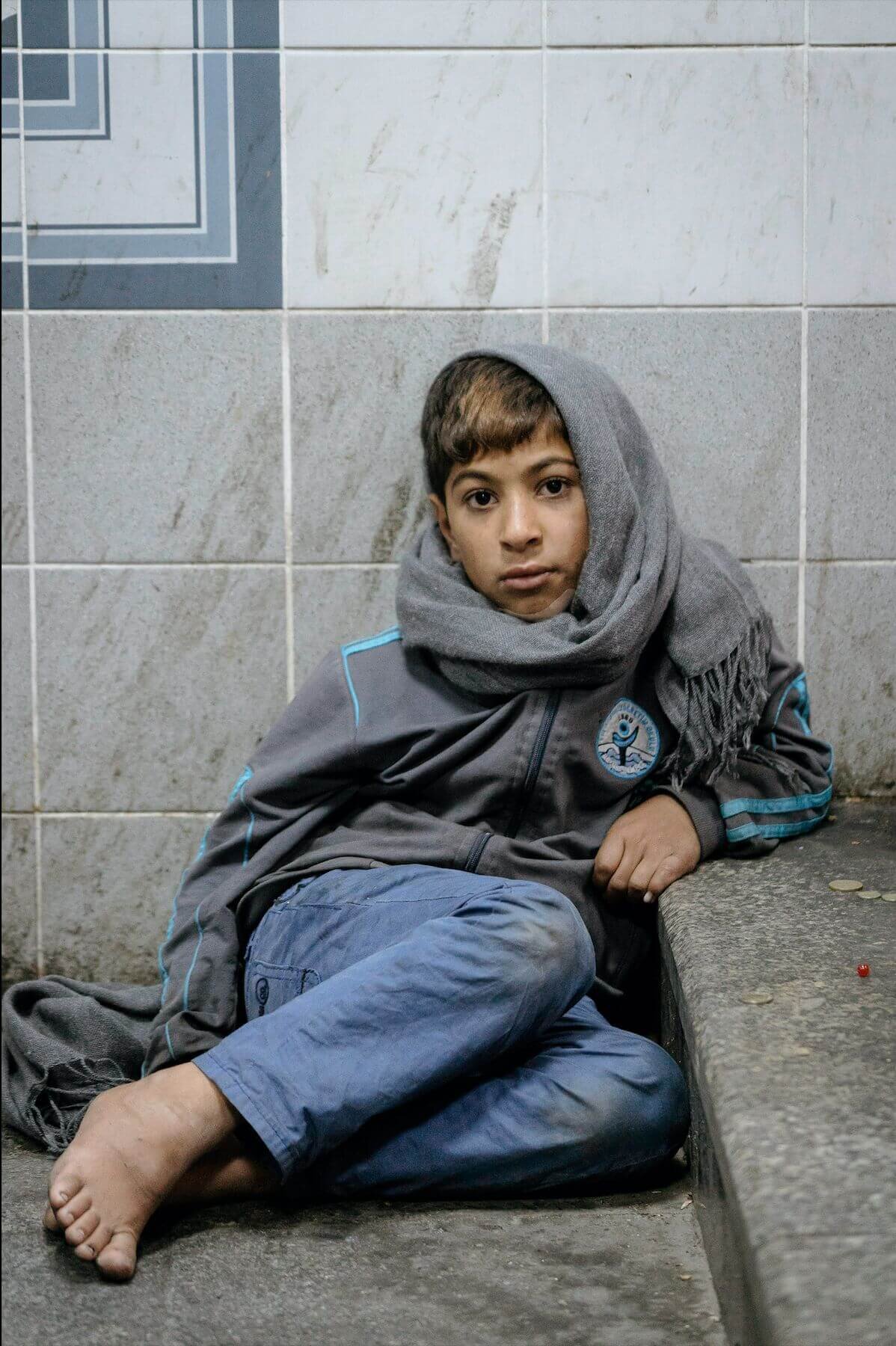Untitled, 2018
Back in 2018 @ephrvim came to me with an idea of an image of a broken CD. It’s crazy to think there are so many out there that will never understand the impact it made on us xennials who grew up in a analogue childhood to a digital adulthood. The idea of this image represented so many touch points - from a metaphor of how we consume music to the evolution of digital culture - the idea was profound. I couldn’t stop seeing the image in my head, except, it wasn’t an image, it was a photograph. It wasn’t graphically designed, it wasn’t illustrated, it wasn’t hand drawn, it was shot with a camera as a still life photograph. The CD wasn’t just broken, it was shattered, almost like glass with an exploded view, floating gracefully in the air. it had a neutral colored background that had a subtle gradient that still kept your eyes on the focal point of the CD. With a soft, yet dramatic shadow that articulated the subject matter.
As soon as the concept was fully rounded out, I knew that the execution demanded the master craft of a still life photographer and that was definitely not me, but I knew who that jedi master was - @gkatz78. We started discussing the concept and he referenced the idea to a 90’s Sony design catalogue. I scoured the internet and finally stumbled across one that was in decent condition with a ridiculous price tag but I still copped it. Once I had it in hand, I was amazed at how much @gkatz78 was aligned to the vision, the reference was perfect.
After weeks of experimenting on stacks and stacks of CD’s, studying it’s design and composition, understanding the manufacturing process, trying to figure out how to shatter the CD without completely destroying it. I even went as far as experimenting with dry ice, boiling hot water, 99% rubbing alcohol, box cutters, etc. But in the end, it was a combination of different methods that was attempted.
After I did some light retouching it went right into the press. what came out of it was a 17”x22” archival pigment print on 330gsm fine art paper.
Creative Directors: Ephraim Cruz & AK
Photographer: George Katz
Lost Souls, 2016
2016 marked the deadliest year on record concerning the refugee crisis and more than half of that statistic was made up by Syrians. For my 34th birthday, I decided to take a trip back to Istanbul, Turkey as this seemed to be a concentrated area of where a lot of refugees would land. Before booking my trip, I reached out to TTS ( Tarlabası Community Center) and worked with the Lead Psychologist to make arrangements for a visit. I really didn’t know what I can contribute but I explained to her that I had a personal interest in what was happening and wanted to contribute in some way. Upon my arrival, I had a more hands-on briefing with my contact as she explained the psychological state of the children I was about to spend the day with.
As luck would have it, the children were very reluctant to want to be photographed because of what they had experienced and as a guest, I could only be sensitive to that. As the day passed, I quietly observed and my presence was more or less treated that of an unwanted stray dog. But eventually, the energy softened up enough for me to interact with them but it was still a challenge to snap any photos. There was one boy who eventually gravitated to me and he drew me a picture that I brought home, even though we could not communicate with words, simple color pencils and paper allowed us to visually express our communications. He eventually allowed me to take a portrait of him and is published on my Instagram.
Although my objective was somewhat of a failure, the experience of bonding with a Syrian refugee child is one that was unexpected and something I will never forget.
It is amazing to see organizations like TTS that make such an effort to protect displaced children of their fundamental rights and helping them rehabilitate to a different culture and social life. When I had came to Istanbul a couple years before, the amount of poverty and displaced children was still very apparent, but not in the scale that it is now.
This is where my body of work for “Lost Souls” is portrayed.
⇩
TIXE, 2015
In this generation of hyper-consumerism, wastefulness is becoming more and more apparent and this single idea was the high concept to this impeccably well-thoughtout art installation. When Ann Lewis first approached me with this idea, it was pretty much a no-brainer. I personally am an advocate of healthy and sustainable living and feel as though it is a necessary enlightenment to those that want to make a world a better place for the generations that are behind us. The idea of creating something from nothing with the spirit of only using materials found in our environment was a challenge that we were more than willing to take on.
Ann and collaborating artist BAMN had stumbled upon this abandoned hotel in New Jersey. The perfect venue to visually tell the story of the concept and an abundance of inspiration with plenty of materials that were salvageable to create a piece of artwork. After scouting the location and brainstorming ideas, Ann started to scavenge the dark and grim hotel by ripping off the unsanitary toilet seats of every room. She had found a section of the hotel with an indoor pool that turned into a cesspool of waste, the perfect location to install this concept. The conditions of our location was more than technically challenging. No power meant difficulty in visibility, just about anything we touched and or came in contact with was unsanitary, all while working in the brutal summer heat where temperatures seem to rise with every effort we made. Sometimes you have to get dirty to win and in the end, Ann had proven that something sustainably beautiful can still be created in a dark and self-destructive environment.
Artists: Ann Lewis & BAMN
Directors: Joe Cavallini & AK
Gentrification in Progress, 2014
A 1-minute cut of never-before-seen footage from 2014 when activist artist Gilf installed her gigantic "Gentrification in Progress" tape over the white-washed façade of legendary 5Pointz. 5Pointz was a graffiti and street art mecca that was visited by art lovers all over the world before it was demolished and replaced by high-rise luxury condos. The installation caused such a stir that it was covered by media outlets everywhere including the New York Magazine, Daily News, Huffington Post, Gothamist and many more.
Editor & Director: AK
Define Progress, 2014
New York City circa 2014 saw a lot gentrification, where silent big money is pushing out New York natives that have been living in the city for as long as they can remember. Toward the end of the year, the gentrification had a big target on apartment buildings, forcing out tenants under low-income housing or rent-stabilized apartments to build luxury buildings for obvious reasons. The pinnacle of all the gentrification that has been going on is probably what happened to 5Pointz in Queens, New York. A mecca for graffiti and street art history in New York has officially been scheduled for demolition to put up new luxury condo’s for the wealthy.
In the midst of this, good friend and artist, Ann Lewis, had taken matters into her own hands by creating an artistic expression about gentrification. New York City-based artist, Hanksy, curated and hosted an interactive art initiative called “Surplus Candy” the same year. Selected artists were given rooms of a dilapidated apartment building in Alphabet City of Manhattan to create meaningful art and murals throughout the building. Ann was a selected artist and had chosen a kitchen for her installation because of what a kitchen represents in a home – a room where families gather to nourish their bodies and souls.
Ann’s installation was also part performance art and I wanted to create a short film to capture this element of the experience. Symbolizing “progress” through a tool of a sledgehammer, she releases her frustrations around the subject of gentrification through an act of destruction, representing a message of how gentrification affects everyday people. What’s left of the aftermath was the actual installation itself, where viewers were able to walk through the room and experience the results of how gentrification can affect families and individuals.
Performing Artist: Ann Lewis
Music Credit: “Hate or Glory” by Gesaffelstein
Directors: Joe Cavallini & AK








